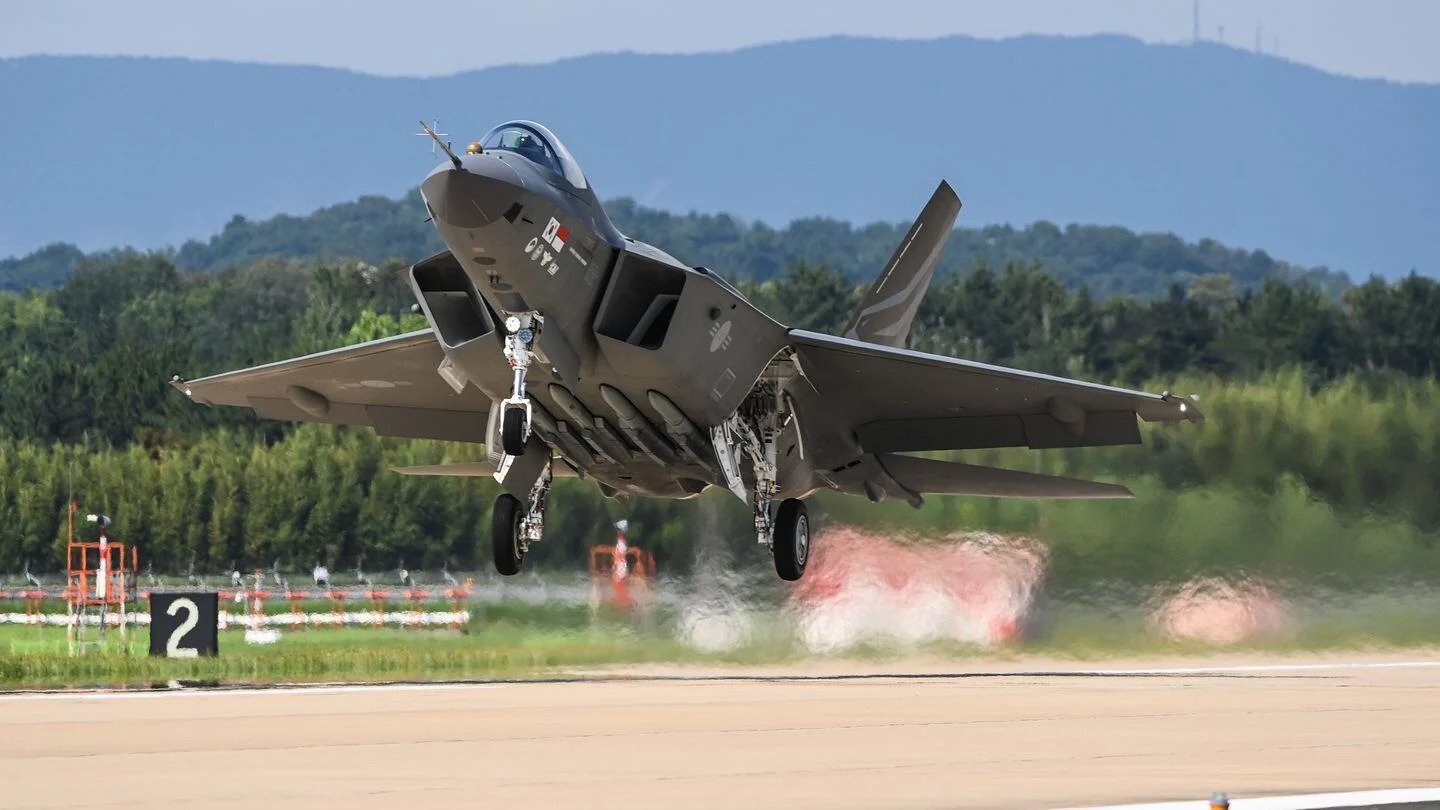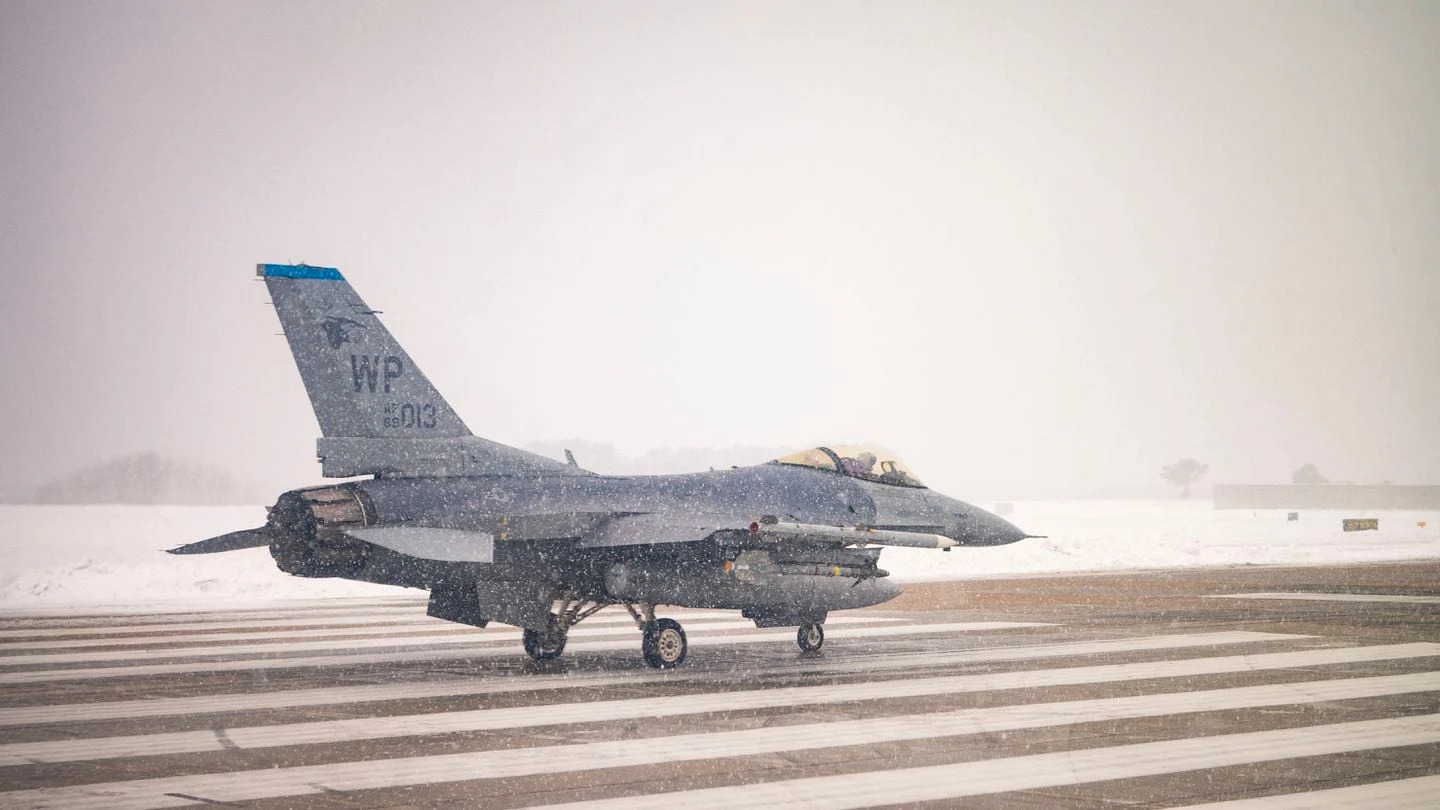South Korea will build 40 KF-21 Boramae fighter jets this year with the 238.7 billion won (U.S. $178.6 million) allocated for the Defense Ministry, even as the aircraft makes its way through flight and ground tests.
The first mass production of the KF-21 is expected to fill the “power vacuum” left when the South Korean Air Force’s aging fighter fleet retires, the defense minister said in a Dec. 21 statement.
According to Korea Aerospace Industries, which makes the KF-21, the engineering and manufacturing phase will conclude in 2026. The Korea Times reported in January the Air Force plans to deploy the first KF-21 in the second half of that year.
The KF-21 is set to replace the F-4 and F-5 fleets, and the Air Force plans to have some 120 Boramae jets in total by 2032.
The Boramae will serve as the “backbone” of the Air Force, the ministry said, and will play a pivotal role in expanding the three-axis system — a strategy that informs how the South Korean military should respond to an attack from North Korea.
The fighter has been under development since 2015, but the program didn’t gain much ground until 2020, when assembly for the first prototypes took place. The government hired Korea Aerospace Industries to produce the jet, and the company sought technological support from American firm Lockheed Martin. The two businesses previously worked together on the FA-50 light attack aircraft.
The inaugural flight test of six KF-21s took place in 2022. KAI carried out a supersonic test within the first 60 flight tests, and the company unveiled the aircraft at the Seoul ADEX defense conference following at least 300 of the planned 2,000 test flights in October 2023.
Flight, ground and additional tests for the remaining prototypes will continue until 2028 — the same year Air Force squadrons are to begin flying the first batch of KF-21s for air-to-air missions.
The fighter jet boasts cutting-edge avionics, including active electronically scanned array radars, and it can carry a range of advanced precision weapons.
South Korea’s Defense Acquisition Program Administration and KAI have been testing missiles to mount on the KF-21 to boost its competitiveness on the international market. In a December 2022 news release, DAPA announced plans to spend 190 billion won to enable the KF-21 to carry long-range missiles. The agency said it will “increase the export competitiveness of missiles linked to the KF-21.”
And last year, the agency announced plans to develop short-range, air-to-air missiles for the Boramae, to be completed in 2035.
KAI has also tested various missile systems under agreements signed last year with the European weapons maker MBDA. The companies plan to mount air-to-surface missiles and short-range air-to-air missiles following an earlier contract that involved mounting Meteor air-to-air missiles on some prototypes.
In April, German company Diehl Defence announced a KF-21 successfully fired the IRIS-T air-to-air missile.
The KF-21 program was expected to cost 8.8 trillion won. DAPA was to cover 60%, KAI would handle 20%, and the remaining 20% would come from Indonesia. However, Indonesia has run behind on payments since 2017.
CNN Indonesia reported in January the government there intends to fulfill its commitments to the program, even as the Southeast Asian nation grapples with fiscal challenges. Meanwhile, Poland and the United Arab Emirates have reportedly expressed interest in the program.
DAPA did not respond to Defense News’ questions on funding arrangements, but the agency has reportedly not made a final decision on financing schemes.
KAI hopes the KF-21 will become its next export success. In 2022, the company signed contracts with Poland for 48 FA-50 light attack aircraft. Lt. Col. Krzysztof Płatek, a spokesperson for Poland’s Armament Agency, wrote on Twitter at the time the two deals were worth a total of $3 billion.
Last December, the Royal Malaysian Air Force ordered 18 FA-50 Block 20 Fighting Eagles.
And even before KAI unveiled the Boramae at Seoul ADEX, the company’s regional manager, Kim Sang Eung, pitched the KF-21 to the Philippine Air Force, calling the aircraft “the most cost-efficient solution” for countries seeking multirole fighter jets.
South Korea was the ninth largest arms exporter during 2018-2022, according to the Stockholm International Peace Research Institute. The Swedish think tank identified the Philippines, India and Thailand as its top customers during the same time period.
Air Force resumes some flight ops in South Korea after F-16 crash
The U.S. Air Force resumed some South Korea-based flight operations Thursday after an F-16 fighter jet crashed off the Korean peninsula’s coast a day earlier.
The pilot, a member of the 8th Fighter Wing at Kunsan Air Base, safely ejected and was in good condition Thursday, said Lt. Gen. David Iverson, commander of 7th Air Force, which directs U.S. air operations in South Korea and the surrounding area.
Iverson said 7th Air Force had paused flying operations to focus on search-and-recovery efforts immediately following the crash, but did not specify whether the ground stop was limited to its F-16 fleet. The Air Force declined to provide details of which aircraft and units had resumed normal operations Thursday.
“The Seventh Air Force, as always, is ready to fight tonight,” Iverson said in a statement on the organization’s website. “I remain confident in our ability to provide airpower to deter aggression and maintain the [Korean Armistice Agreement], defend the Republic of Korea and defeat any attack against the ROK-U.S. alliance.”
The pilot in Wednesday’s incident had an unspecified in-flight emergency and ejected before the aircraft crashed into the Yellow Sea just before 8:45 a.m. local time, the Air Force said. The mishap marks the third accident of a South Korea-based F-16 in the last nine months.
The Air Force is investigating what led to the latest accident. Iverson said preliminary findings have not indicated that the F-16 crashes are related.
In May 2023, an F-16 assigned to the 8th FW crashed in an agricultural area about a dozen miles from South Korea’s Osan Air Base. Then in December, a pilot was forced to eject from a Fighting Falcon from the same wing after suffering an in-flight emergency during a training mission. The pilots safely ejected in both cases.
An investigation into May’s crash has finished and will not be made public, Iverson said. The inquiry into December’s crash is still underway.
About three F-16s have been totaled, on average, each year for the past decade, according the latest available data compiled by the Air Force Safety Center in 2021. The multi-purpose fighter was delivered to the Air Force in 1979; the service now owns around 840 F-16s.




